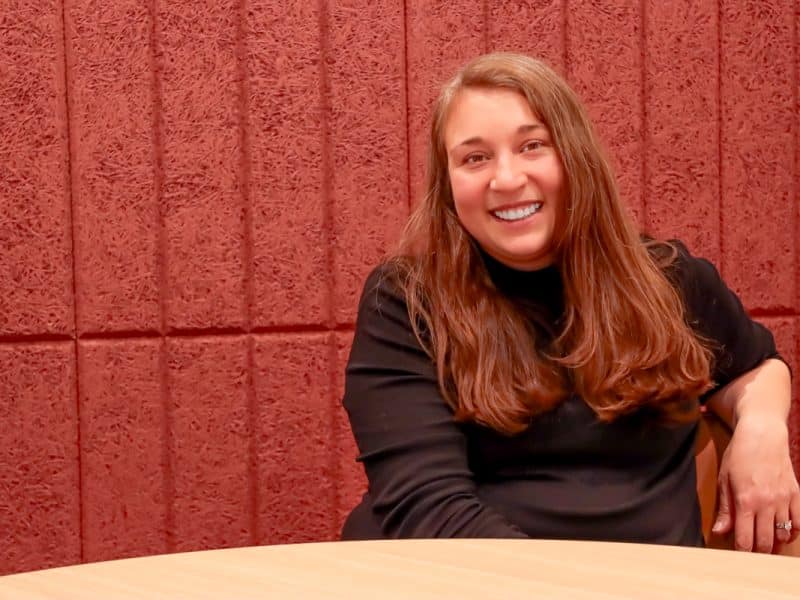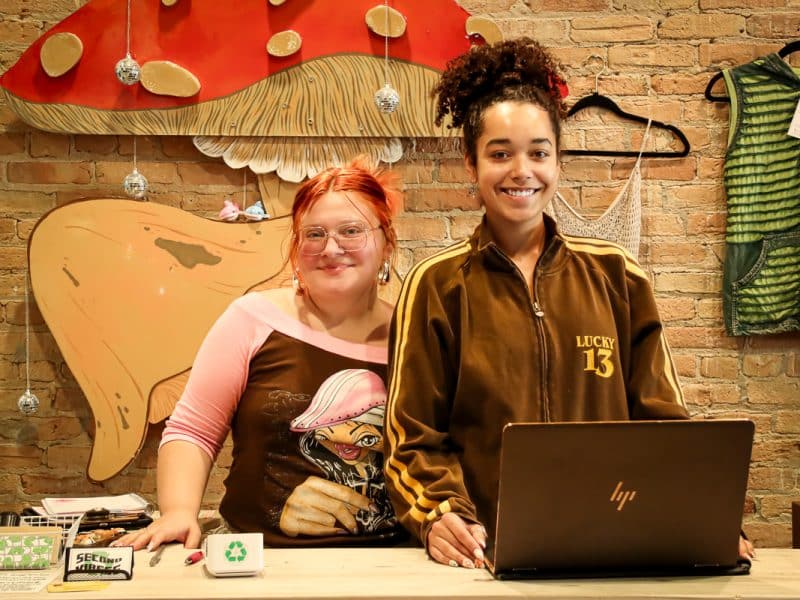G-Sync: Living Building Challenge in Grand Rapids
Goethe's famous quote, "Whatever you can do, or dream you can, begin it. Boldness has genius, power, and magic in it" becomes crystal clear with new meaning when Lifestyle Editor Tommy Allen meets Baxter neighborhood's Matt and Kristin Fowler. This is part one of their incredible journey to build something new in our city.
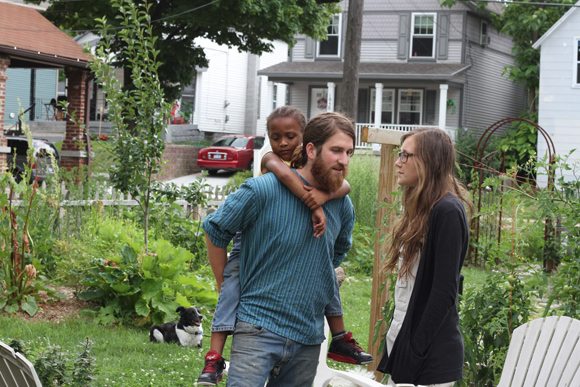
Late this last spring I penned a case for community members to consider breaking a few of our city’s rules (i.e. backyard fire pits and urban hens) as I viewed many in the city who were already violating such laws at a rate that was almost laughable.
The need to jettison these laws to the history books became abundantly clear after I viewed a recent Facebook image from a local government employee who was hosting a roaring backyard fire pit. When they were asked by someone about it, they laughed that they were just about to toss a wiener on the grill if the fire department stopped by (wink, wink).
While the joke is funny, the reality is that the world around us is rapidly changing and we as a city need to be nimble in responding quickly and proactively when new issues land in our city limits.
The present response by the city to the arrival of Airbnb in Grand Rapids has given many hope that, on issues ranging from chickens to construction, we can come together and solve a matter between differing parties to write a policy that could be the start of something new. It might not be perfect, but it is the start.
So when Commissioner Kelly asked me to consider visiting Matt Fowler of the Baxter neighborhood to talk chickens this summer, I was thrilled at what I discovered.
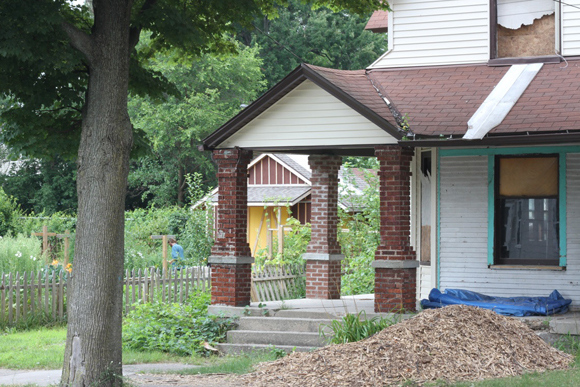
As I stepped into the Treehouse Community Garden at 1045 Logan St. SE, I was in awe not only of the scale and variety of plants popping up but also at what Matt and his neighbors hope to plant soon.
I went in to talk poultry but our conversation quickly turned to the unique remodel of the run-down building next door that Matt and his wife Kristin purchased and are hoping to turn into one of the world’s first certified homes with the Living Building Challenge (LBC).
“As I researched into where products were coming from in the construction of our homes, I discovered many factors I did not like at all,” says Matt, who added that many imported consumer products are often produced by slave labor in other countries — a fact that was backed up a few days after our meeting by an episode of Vice on HBO where they showed just how easily a family could become enslaved.
As the credits on the Bonded Labor episode rolled, I knew the Fowlers were attempting something more than trying to be conscious consumers. He and his wife believe being better stewards of this earth means that we have to be aware that our actions cause ripple effects in this world. They also realize that, to fulfill this goal, they would have to do things differently than they have been done before.
Suddenly Goethe’s famous quote, “Whatever you can do, or dream you can, begin it. Boldness has genius, power, and magic in it” becomes crystal clear with new meaning.

The Living Building Challenge’s bold goals imagine a different way of building a structure, with each step in this new way of building likened to the opening up of a flower.
The Challenge certification looks at seven key performance areas and denotes each as a petal of flower, with “petals” in the areas of place, water, energy, health & happiness, materials, equity, and beauty. It takes LEED principles and makes them personal and beautiful.
These individual petals are then subdivided into twenty imperatives, each of which focuses on a specific sphere of influence. According to the International Living Future Institute, which overseas the certification of each project, the “compilation of Imperatives can be applied to almost every conceivable building project, of any scale and any location—be it a new building or an existing structure.”
One of the easiest ways to image how this works is to picture a regional or native plant that figures out how to live where it has been birthed and use what is around it to survive. For a living house to be certified, it must ultimately get what it needs within the region and be in harmony with the planet.
Only when something cannot reasonably be procured in what I can best describe as a hyper-Local First model can a person write for an exception to be granted.
Matt and his wife Kristin, both artists, were inspired by the LBC encouragement to create not just living buildings but to impact the landscape and create a better way of life for those who live in our community.
To date, only a small handful of businesses have achieved this status around the world. Even without the full certification, a petal designation still represents progress in an area from which all can benefit. In other words, failure to achieve full certification is not really failure.
Matt and Kristin achieved their first big step forward last fall when their Indiegogo crowdsourcing campaign, The Nest, netted them more than $21,000 for this project.
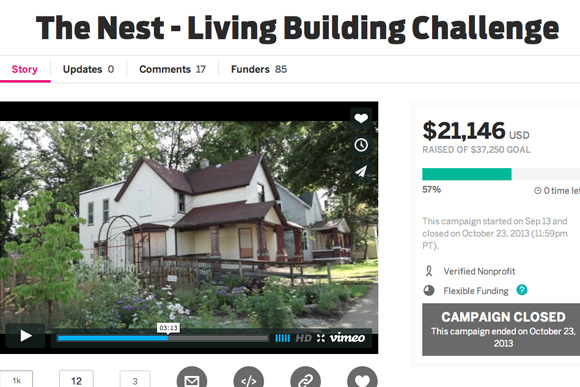
As I have been observing this project over the last few months, the Fowlers, along with their neighbors and friends, have been busy as they collectively tear down the interior of the house. They’re attempting to strip out all the negative materials, salvaging the natural products that can be reused in the rebuilding of the house.
Being the first at anything within the business community is where the research and development takes place and is often the most expensive when blazing a new trail.
The Fowlers, while always concerned about the path their lives would take on this journey into the Baxter neighborhood, realized early on that this project would be about being a part of the community, not creating community, since it was always there. After some research, the Fowlers kicked off their campaign to build a living home in the fall of 2013.
As the project moves forward, the Fowlers continue to be an example of the way one family willing to take a risk can create a ripple effect that influences the wider community. As West Michigan grows its understanding of B Corps, social entrepreneurship, and the sharing economy, the creation of an LBC house can serve as a reminder of what’s possible here.
Stay tuned for part two of this article next week, when we look at how the Fowler’s project has drawn in community partners and forged connections across industries and organizations.
The Future Needs All of Us
Tommy Allen
Lifestyle Editor
Be sure to visit G-Sync Events: Let’s Do This! for a wild ride of things to add to your calendar. You will be glad you did this week.

